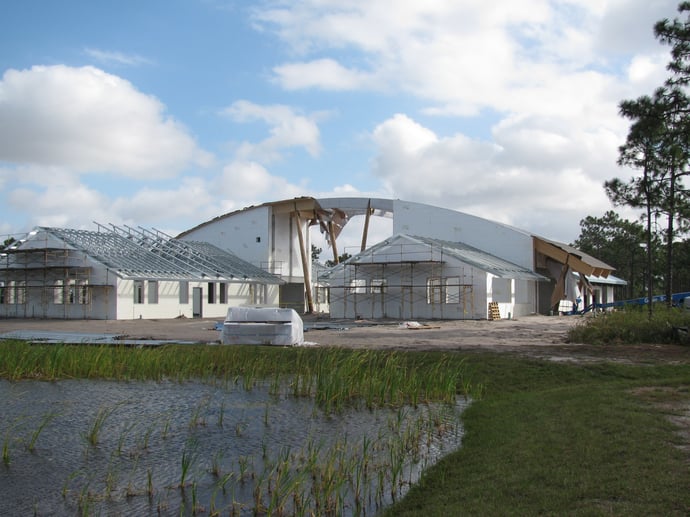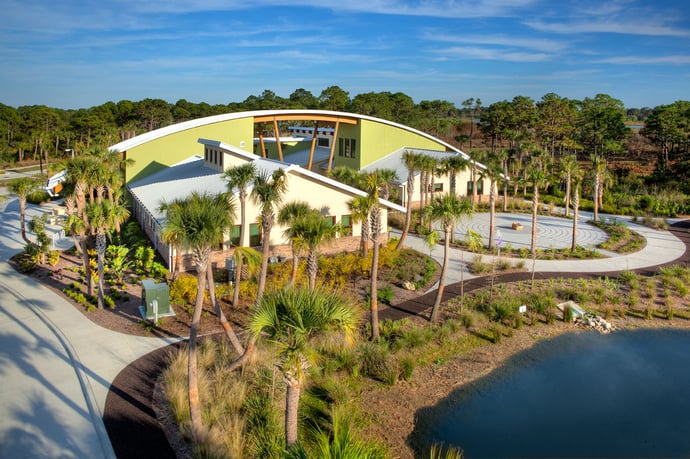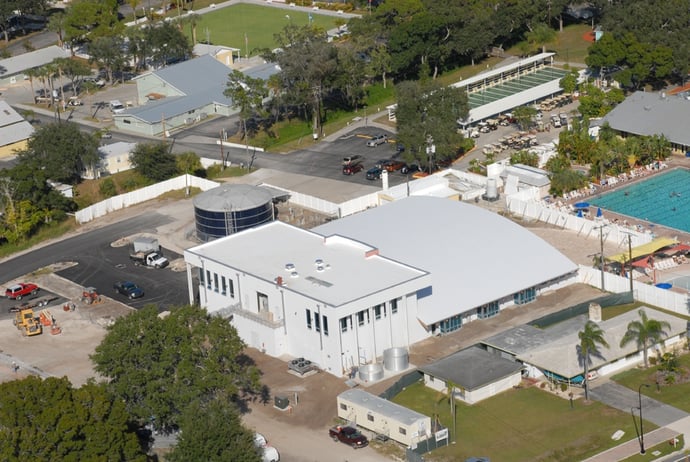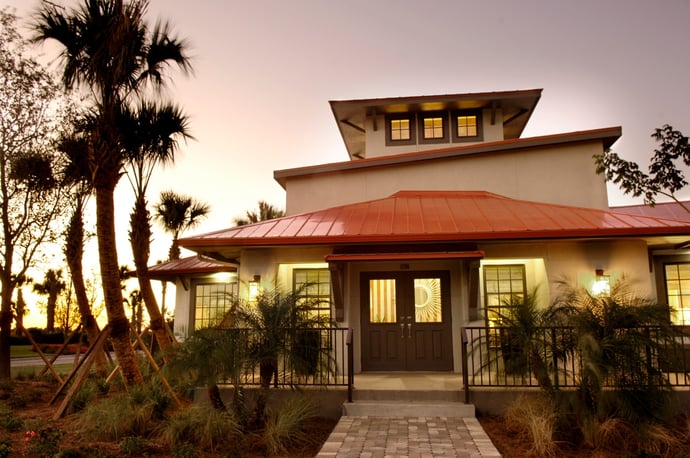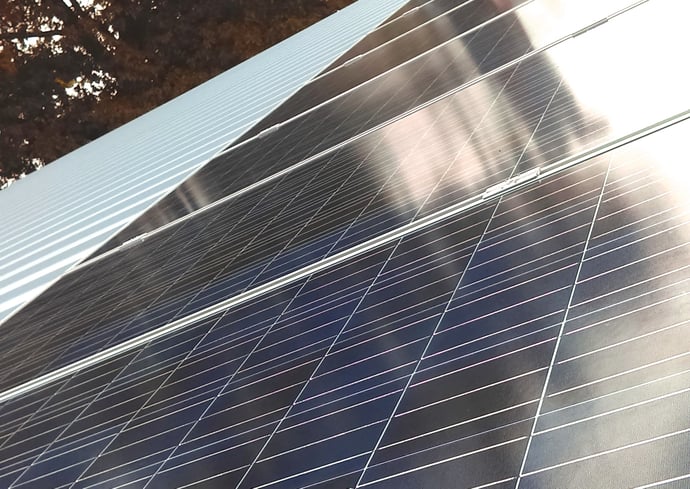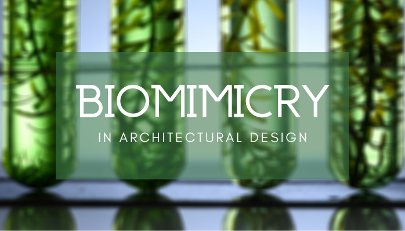
Sustainable Design Blog


What Architects Can Learn from Nature’s Design

Geometric shapes. Intricate weaves. Spider webs form strong, complex structures that function as homes and food traps for the arthropods. Sunflower florets line up at just the right angle for each to get the right amount of sunshine. Tall, majestic cypress trees don’t just look amazing. They have “knees”—woody projections growing vertically from their roots—helping them stay healthy. Nature’s designs are worth paying attention to because they present biological solutions for environmental challenges.
Nature Inspired Design: Silk, Sunflowers, and Cypress
The silk that makes up a spider’s intricate web has properties that go beyond the practical needs of spiders for home and food. Founders of Bolt Threads recognized the built-in softness, high-tensile strength, and long-lasting durability and believed they could develop natural silks that mimic the natural proteins in spider webs. The result? Bio-
designed fabric that’s as durable and biodegradable as spider’s silk.
Designers of solar arrays ran into the challenge of panels being too close together and shading one another. That meant sometimes they had to be so spread out, they’d take up enormous acreage. When researchers at the Massachusetts Institute of Technology turned to nature for a solution, they realized if they mimicked the geometric positioning of a sunflower’s florets when they laid out the solar array, the problems went away. They could use less space, gain energy efficiency, and operate with better land management.
Less understood than spider’s silk or a sunflower’s florets, cypress knees—as I’ve discussed in a previous article—act as filters to break down waste into fertilizer and then convey nutrition to the rest of the tree. One reason this matters is the need for productive ecosystem solutions in built environments. We can study nature’s design in cypress knees and develop products that work like the trees to filter waste. It could be a flat disk at the bottom of a pond that filters heavy metals or a 1,000-gallon tank with bio-filters. The better we understand nature’s solutions, the better our designed solutions will become.
Bio-design in Built Environments
Built environments have faced sustainability challenges since we started relying on concrete and steel. A massive carbon footprint comes with those industries’ energy-intensive supply chains that burn fossil fuels and use excessive amounts of water.
To overcome these challenges, architects can take lessons from nature. When we’re working on a new design, that means asking, “How is this process accomplished in nature?”
For example, we’re studying the luciferin gene in fireflies. When the substance combines with oxygen and amino acids, it produces the light we see, (light that produces no heat) when fireflies fill up the night sky.The more we understand their lights, the more potential for developing rural lighting solutions that don't rely on cables. We could actually have nature inspired design that gives us greater security in rural areas.
We're also studying the calcium carbonate in conch shells and considering how to design and build sea walls with it. Calcium carbonate forms when conch shells and other sea animals pull carbonate from the ocean’s saltwater to combine it with their own calcium. The idea behind building sea walls with calcium carbonate is the saltwater will naturally help build the wall. We don’t have all the pieces to the puzzle yet, but if successful, a sea wall like this would be a carbon sink. Another biodesign that solves an environmental challenge.
Everyday lessons from nature are numberless, and designing more sustainable built environments depends on our ability to learn them well.
To find out more about how we look to nature’s design in our green architectural design services, reach out.
What Architects Can Learn From Nature's Design: Fire fly light
What do fireflies have to do with designing security lights in rural areas?Everything!We're studying how fireflies light up to help us understand how we can provide...

Grenfell Apartment Tower- Putting Cost Before Safety: Lessons and Loss
Don't let code minimums and first cost doom your design.
On the front page of the Sunday New York Times from June 25, 2017, there is a heartbreaking story of loss of life in the Grenfell Apartment tower. Authors David Kirkpatrick, Danny Hakim, James Glanz and contributors Zephira Davis and Nour Youssef tell us of the background that led to the disaster. Read the article here:
https://www.nytimes.com/2017/06/24/world/europe/grenfell-tower-london-fire.html?_r=0
The story is about how a flammable exterior building skin was added to the building and the skin caused the building to burn from the outside inward.

From my architecture perspective, I want to focus on 2 things gleaned for the article: the idea of designing to the code minimum, and using lowest first cost as a driving factor to decision making.
I have said for a long time, code minimum building design means if it was designed any worse, it would be illegal. Yet we live in an environment of development that looks for ways to design to the code minimum as the goal and as a desirable approach. Why do we want our buildings, that should be around for 100+ years, to be barely legal at the time they are constructed? Why would we want to design to a higher standard than code minimum? In the case of Grenfell Towers, (and the dozens of other apartment blocks in London evacuated since the fire), exceeding the code in practical ways could bring great value to the design. In this case, exceeding the code could directly save lives.
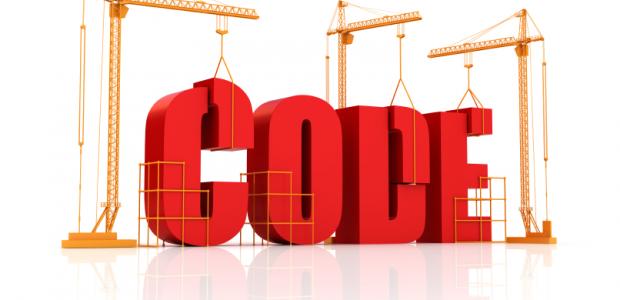
The article address regulations head on. “Business friendly governments in Britain- first under Labor and then under the Conservatives- campaign to pare back regulations.” And “Governments adopted slogans calling for the elimination of at least one regulation for each new one that was imposed, and the authorities in charge of fire safety took this to heart.” I have heard the exact same slogan coming from the new United States executive and legislative branches since the new administration has taken over power. Randomly eliminating regulations to gain political points is dangerous, to say the least. The authors state, “Promising to cut ‘red tape’, business friendly politicians evidently judge that cost concerns outweighed the risks of allowing flammable materials to be used on facades.” Even after warnings inside the regulatory process, “still no changes were made. ‘The construction industry appears to be stronger and more powerful than the safety lobby’, said Ronnie King, a former fire chief.” We need to recognize that code minimum (aka barely legal) is not a basis for good design. It is only the basis to stay out of jail.
That leads us into the second topic of this blog- lowest first cost as a driving factor to decision making in building design. In the case of fire regulations in Britain, “A top building regulator explained to a coroner in 2013 that requiring only non-combustible exteriors in residential tower ‘limits choice of materials quite significantly.’” Using fire-resistant materials was more expenses, but we need to recognize that there is real value in doing it anyway. Manufacturers who have an obvious financial interest in selling product, pushed back. “’Any changes to the façade to satisfy a single requirement such as fire performance will impinge on all other aspects of the walls performance as well as costs’, Stephen Ledbetter, director of the Center for Window and Cladding Technology, an industry group, wrote in testimony to Parliament.” A single requirement such as fire safety is a pretty significant requirement! Using first cost as a driving force in building design can have long term consequences, both catastrophic, in the case of the Grenfell Apartment tower, or in a gradual deterioration such as toxic chemicals from cheap materials off gassing into the interior space and gradually poisoning the occupants. (think urea formaldehyde, volatile organic compounds (VOCs), or even lead paint, and asbestos)
Using green building standards such as LEED and the Living Building Challenge gives our firm a systematic, thoughtful, proven and tested approach to designing our buildings above code minimum standards, and allows us to more fully evaluate first cost vs. life cycle cost/ return on investment questions with the long-term well-being of the building, it occupants and the owner’s wallet in mind. Exceeding code minimums in areas of design like building envelop performance, resiliency, indoor environment quality (IEQ), reduction and elimination of toxins like VOCs, and reducing carbon emissions to name a few, all have real value and a ROI, whether you can measure the ROI in dollars, lives saved, of in comfort, happiness and delight of the occupants.
We are building buildings pretty much the same as we have been over the past 100 years. What else in our world is so much the same over the past 100 years? It is time to look above and beyond designing to code minimums, and stop using lowest first cost as the primary factor to decision making.
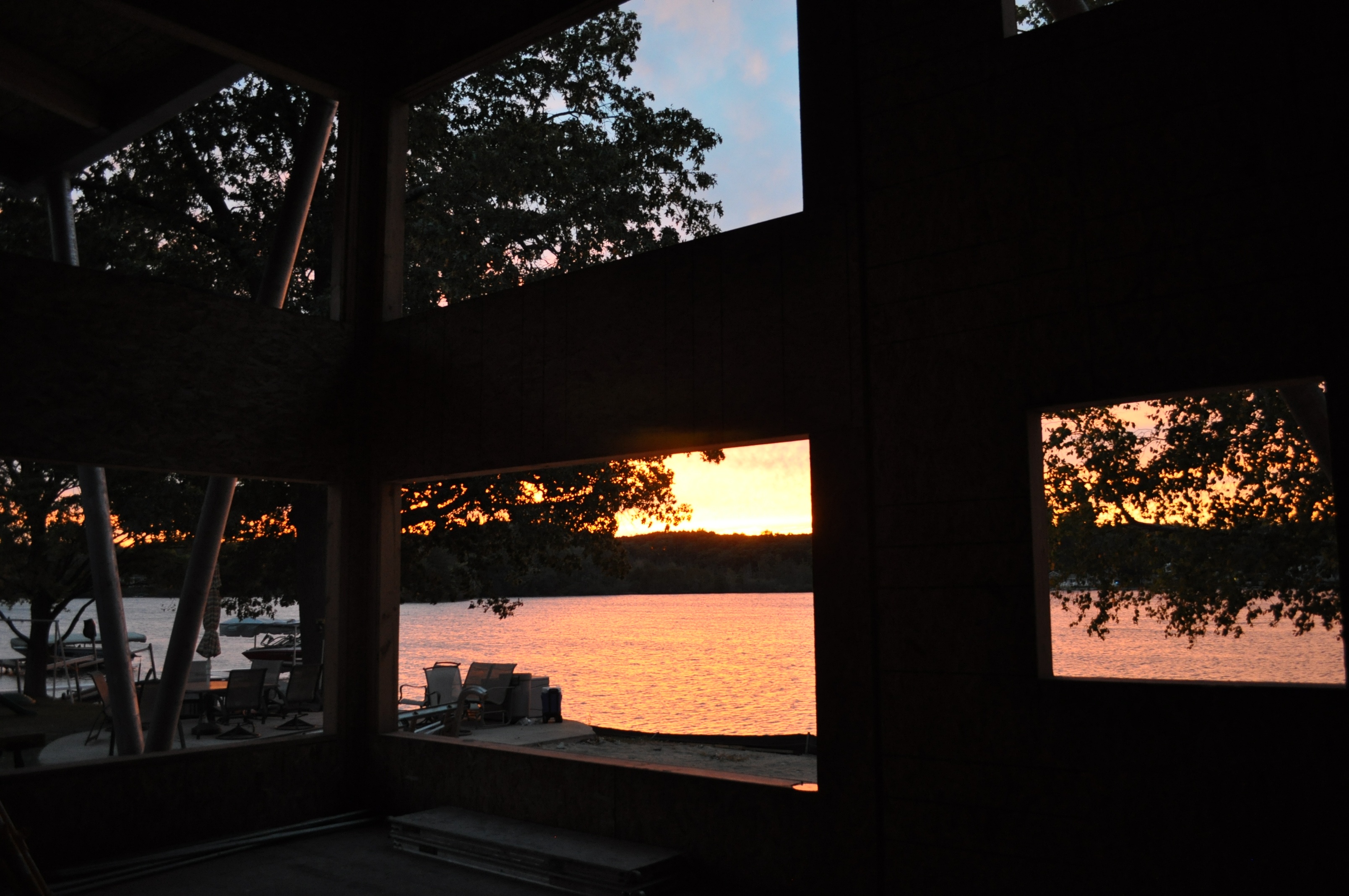
Drawing Parallels between the Civil Rights & Sustainability Movements
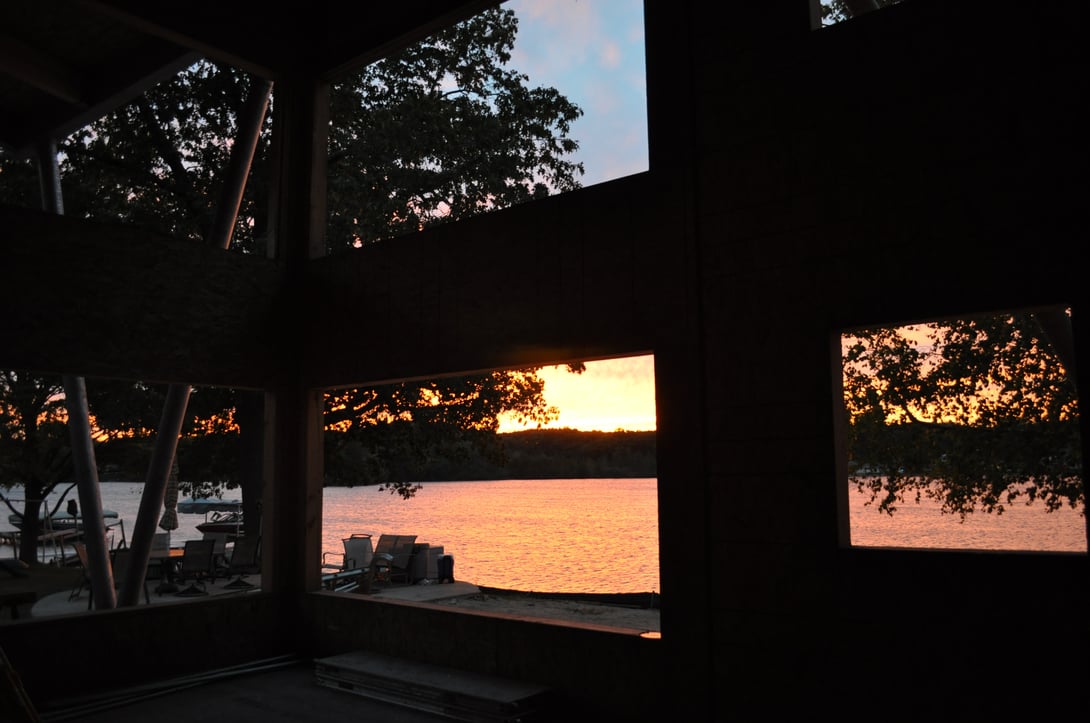
We face EXTREME opposition:
Since participating in the Women’s march in Washington DC in January 2017, my awareness of civil rights issues has been heightened. Moreover, I am beginning to see many similarities between those opposing minority groups in the 50s, 60s, and 70s, as they fought for equal rights and those opposing movements today fighting for a cleaner world.
In an exercise to draw out the similarities I took some profound statements from a book I just finished reading (Deep Denial by David Billings), and re-wrote them to fit into my perspectives on the current sustainability effort in the US. I hope these help you to see the connections.
Civil Rights Perspective 1, by David Billings
The civil rights movement created a profound shift in consciousness among its rank-and-file participants. It impacted people’s identity and sense of self. It became for many a point of personal departure- a turning point in their lives.
Those who witnessed this brief moment felt that, finally this nation was about to banish racism and inequity from the national landscape. The words of Dr. King resounded around the nation.
Many even dared to believe that the words of the nation’s creed “all people are created equal” might finally mean something to its black citizenry, to Puerto Ricans, African-Caribbean's, Mexican Americans, Asians pacific islanders and Native Americans.
Perspective 1: shifted for Sustainability
The sustainability movement created a profound shift in consciousness among its rank-and-file participants. It impacted people’s identity and sense of self. It became for many a point of personal departure- a turning point in their lives.
Those who witnessed this brief moment felt that, finally this nation was about to banish environmental degradation and inequity from the national landscape. The words of David Suzuki, Mahesh Ramanujam, Janine Benyus, Naomi Klien, Elon Musk, William McDonough resounded around the nation.
Many even dared to believe that the words of the nation’s creed “all people are created equal” might finally mean something to the privileged, the poor, white, black, etc. etc….all.
Civil Rights Perspective 2, by David Billings
A web of self-interests among the economic elite, the academy and media, sanctioned and legitimize by the power of the state, sustains white privilege.
This unspoken preference for white is what has held poor and working-class whites in support of an arrangement that does not serve their best interest -except the self-interest of being white in a race-constructed nation.
This social contract has worked since the founding of the republic.
Perspective 2: Shifted for Sustainability
A web of self-interests among the economic elite, fossil fuel beneficiaries, long standing institutions, those who can avoid the negative environmental impacts longer than most, and the media, sanctioned and legitimized by the power of the state, sustains the status quo.
This unspoken preference for environmental destruction is what has held those suffering from the impacts in support of an arrangement that does not serve their best interest - except the self-interest of short term profits and instant gratification.
This social contract has worked since the beginning of the industrial revolution.
Check out our latest LEED certified and other sustainable design projects!
Civil Rights Perspective 3, by David Billings
But we were no longer as involved in the politics of the community. Our emphasis had changed from our very nascent organizing effort to direct services. Unbeknownst to us, we had become part of a national effort to de-politicize community efforts at self-determination.
We…. begin to move away from community-based organizing. We were so busy with our programs! We transformed ourselves from community organizers who fought for decent housing and education, who demanded community accountability boards to oversee police, into managers of after school recreation programs.
We claim we had no time for organizing, nor the funding to do it. After all, we were doing good work for needy children.
Perspective 3: Shifted for Sustainability
But we were no longer as involved in the activism of the community. Our emphasis had changed from our very nascent organizing efforts to direct services. Unbeknownst to us, we had become part of a national effort to de-politicize community efforts at self-determination.
We begin to move away from community-based organizing. We were so busy with our programs! We transformed ourselves from community organizers who fought for the environment, less carbon, clean water, less toxins, social equity, and education, who demanded community accountability from our government, corporations and institutions, into managers of lunch and learns and award programs.
We claim we had no time for organizing, nor the funding to do it. After all, we were doing good work for our members.
For me, the parallels are standing in plain sight.
What do you think? Are we still excepting the status quo because it is hard to change? Are we activating our communities? Are we organizing? Does your house or office building set an example in your neighborhood or community? Will it be on the right side of history?
Click HERE to start exploring a sustainable design project with Carlson:
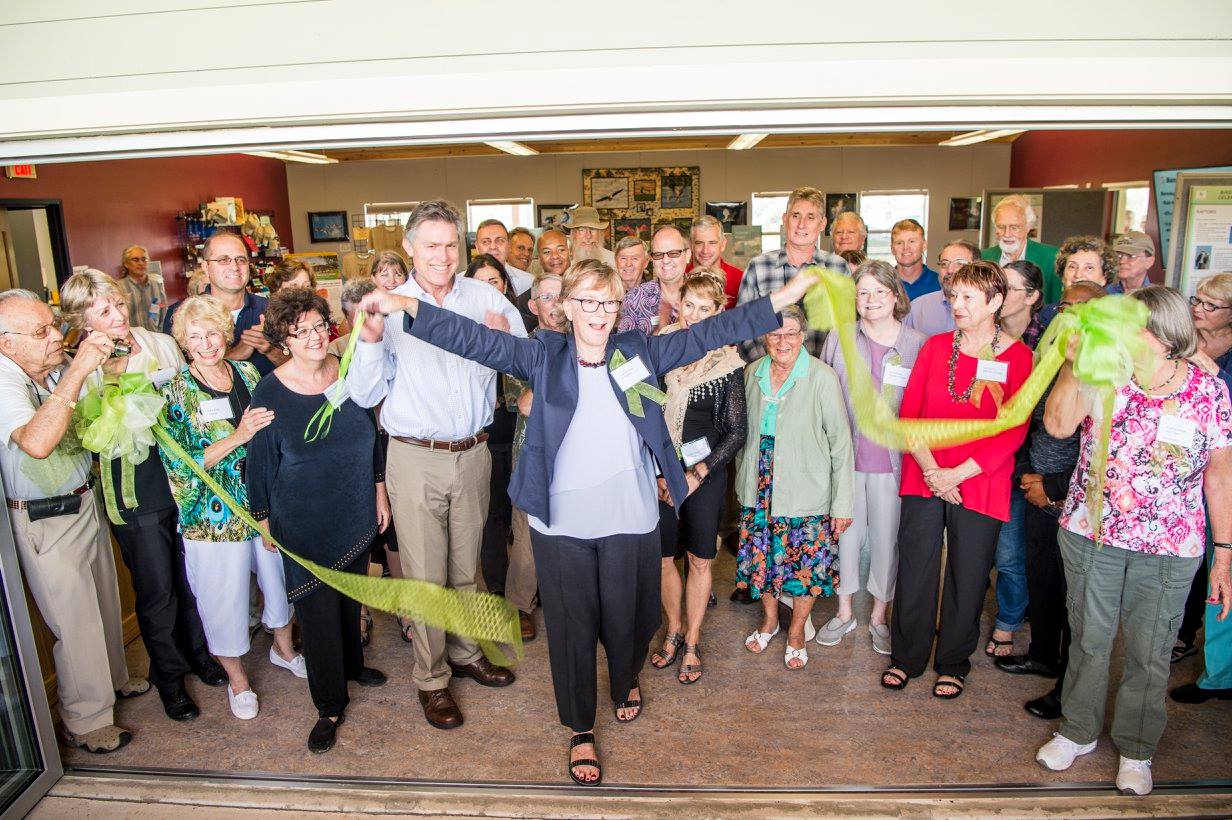
Net Zero Energy: how Sustainable Design is Changing Your Future
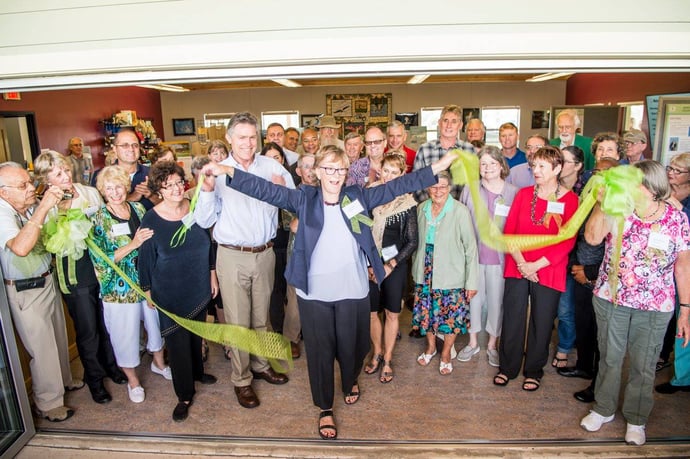
NET ZERO, AND LOVIN' IT!
Hi everybody, and happy 2017! I hope you had a wonderful holiday season, and were able to celebrate the New Year with good people and good times.
Speaking of, I wanted to kick the year off with a little celebration of my own - because we just received report back on our 2016 Gold LEED certified nature center at Audubon - and it turns out that just by existing, our building is contributing to solving our energy crisis!
Similar: How to Choose a Solar Power System for Your Home or Business
I would like to use this blog to give you an update on one of our recently completed projects - the Audubon Nature Center located at the celery fields in Sarasota, Florida (see gallery here).
The building has been open for a little more than a year, and we have been gathering data on its electrical use. As I reported earlier, the building is a net zero energy building, which means it creates more electricity than it uses.
So, now we have a full year's worth of data to share, and even a break down of how the power was consumed.
Below is a table which shows the actual annual power demand and actual solar PV generation for the Nature Center. Total demand is 15,107 kWh per year. And, according to a study conducted by the EIA (US Energy Information Administration), that is almost identical to the energy consumption in the average household here in Florida and an average of nine other nearby states.
Download the resource: How to Design a Green Home
The electrical system exports more than 25% power (4,000 kWh) than it consumes (15,000 kWh)! By making significantly more energy than it consumes, it not only offsets 100% of it carbon footprint caused by electrical generation, but it helps others do the same by providing clean, renewable energy to the electrical power grid. So, the building has exceeded net zero performance and is operating as a net positive facility.
|
Total Demand |
15,107 |
kWh |
|
Lighting |
3,462 |
22.91% |
|
HVAC |
6,536 |
43.27% |
|
DHW |
309 |
2.04% |
|
Refrig |
428 |
2.83% |
|
Plug Loads |
4,372 |
28.94% |
|
Solar PV |
19,117 |
kWh |
|
Net Export |
4,010 |
kWh |
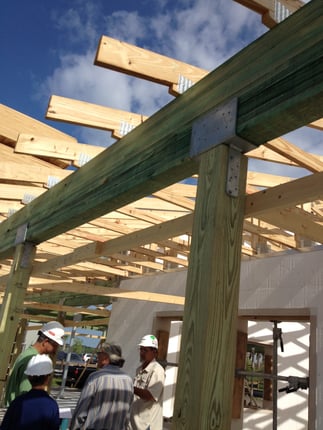 One thing to remember - this is NOT just about solar power. Net Zero Energy starts with the building envelope, and carries on with passive design features that put conservation first. Then, one does not need to create as much of it its own energy to become net zero or net positive.
One thing to remember - this is NOT just about solar power. Net Zero Energy starts with the building envelope, and carries on with passive design features that put conservation first. Then, one does not need to create as much of it its own energy to become net zero or net positive.
The building has a highly efficient building envelope including insulated concrete form walls and double glazed insulated low E coded windows.
Plus, the building orientation and wraparound covered porches provide shading 100% of the time. The building has a sealed attic with spray foam insulation on the underside of the roof deck.
The building creates its own energy by using its 11.2 KW's PV solar array mounted on it south facing roof.
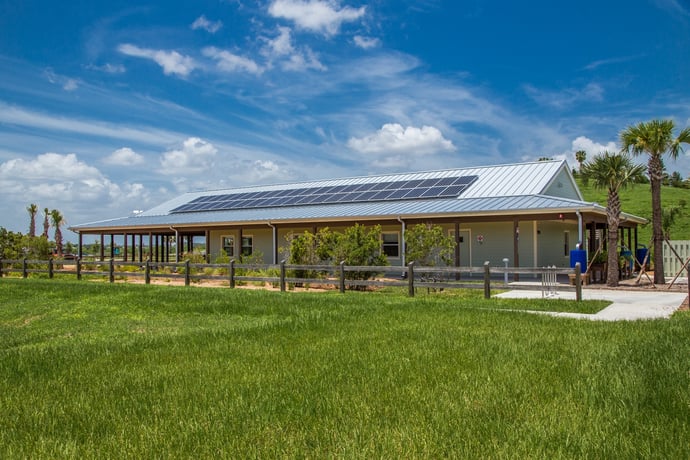
But back to the results, because I find them to be quite fascinating.
It is no surprise that the HVAC electrical use is the largest use in the building. What I find interesting is that the plug load electrical use is the second largest component of energy used in the building.
Plug loads are those things inside the building that the occupants use that demand electricity. It could be the coffee pot, copy machine, printer or a desk lamp or a little tabletop fan- things like that. These are electrical uses that are not well defined in the design phase and they are hard to estimate and difficult to control. Plug loads are one of the main reasons why net zero energy needs to be proven through actual use and not just modeled/predicted.
The Audubon Nature Center received LEED-NC Gold Certification in January of 2016. The high-performance design has actually been exceeding the projected energy performance predicted by the energy modeling. And, in Oct 2016, the project won the prestigious USGBC Florida Gulf Coast Chapter Outstanding LEED for New Construction/Non-Profit Award for the region.
Try also: Does the Cost of Solar Energy Outweigh the Benefits?
CONCLUSION:
Forget about Net Zero Energy.... Let's talk about Net Positive energy design! It is possible, even on a modest budget.
Wouldn’t it be great if every new building provided more energy than it consumed, so new construction actually reduced the overall power demand in a neighborhood or region instead of increasing the demand? Some people are already doing it, and their making it easier for you and your friends and family to exist and prosper.
What if architecture added resources instead of consuming them? Why don't we make that our goal? If you're interested, I'm happy to walk you through a consultation for your next build to see if sustainability is a worthy investment! Click HERE:

How to Get Your Energy Efficient building With new Light bulbs
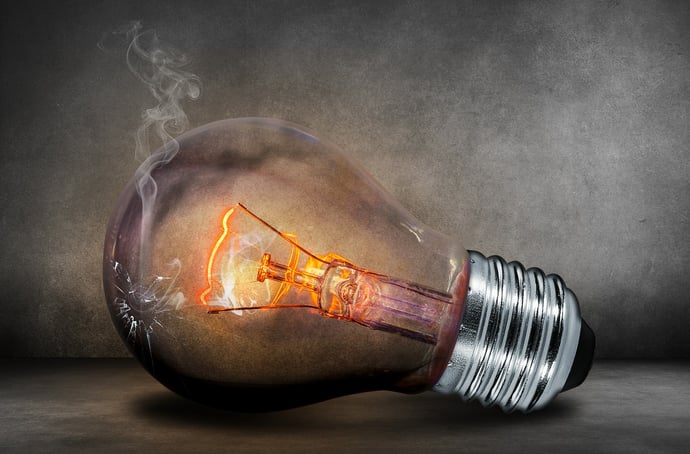
Reinventing the first BRIGHT idea:
Thomas Edison’s 19th century invention of the incandescent light, which has an electric current running through a wire filament and heating it until it starts to glow, has been phased out by federal legislation.
So, what's the right answer for YOUR business? Is it CFLs? LEDs?
You want an energy efficient building - Let these bulbs light the way!
Although they are cheap to produce, incandescent bulbs aren't very energy efficient. Many businesses saw this as being a problem years before government intervention, and initially replaced them with the compact fluorescent lamp (CFLs), which has an electric current driven through a tube containing argon and a small amount of mercury vapor.
Now, the trend in lighting is focusing on the use of LEDs (light-emitting diodes) that are illuminated solely by the movement of electrons in a semiconductor material.
1. WHY LED
LEDs provide light nearly equivalent in quality and color to the old incandescent bulbs, while offering both efficiency and lifetime improvements over CFLs. For example:
- CFLs usually take some time after switching them on for them to become fully bright
- Disposing of CFLs is cumbersome due to the environmentally harmful mercury they contain
- While some people see the fact that LEDs only emit light in a specific direction and may not spread as evenly CFLs, this directness allows for more efficient light and energy use
- They also are completely programmable and will allow for smarter management of lighting in your building
2. Why Not LED
The drawback to LED lighting, for the moment, is sticker shock. A typical LED bulb can cost more than $20. CFLs are certainly cheaper, but the good news is that the rapidly evolving LED technology is coming down in price.
MORE LIKE THIS: Green Building Materials You Probably Don't Know About
3. How Energy Efficient Are They?
Although once known mainly for indicator and traffic lights, LEDs in white light, general illumination applications are one of today's most energy-efficient and rapidly-developing technologies.
According to ENERGY STAR, CFLs use 25-35% less energy than incandescent bulbs, but if you really want to make the biggest environmental impact, choosing LEDs is the way to go. Some LEDs, especially those rated by ENERGY STAR, use 75% less energy than incandescent lighting.
But energy efficiency isn't just about how much electricity it takes for them to be effective... what about lifespan? The less we have to manufacture, the less energy we use there too!
The average life span of a LED bulb is 50,000 hours and the CFL bulb lasts an average of 8,000 hours. Your incandescent bulbs? 1,200 hours.
4. Big Picture Implications
According to the Department of Energy (DOE) and the U.S. Environmental Protection Agency (EPA), lighting in industrial and commercial buildings accounts for close to 71 percent of overall lighting electricity use in the U.S. and consumes nearly 35 percent of the electricity used in the nation's commercial buildings - and still much of this lighting is comprised of those inefficient linear fluorescents
Among all energy efficient measures available to a commercial facility, lighting is one of the biggest energy hogs, so making changes here offers the shortest payback and strongest return on investment over any other change you could make with your existing structure (followed closely by HVAC measures).
5. Other ways it's awesome
They're cool:
LEDs emit very little heat. In contrast, CFLs release about 80% of their energy as heat, according to Energy.gov. Incandescent bulbs can reach temperatures of over 330 degrees Fahrenheit! But LEDs operate at a cool 87 degrees. Savings here can be seen in the amount of A/C your business uses in order keep the work environment cool.
They create value:
Converting an existing building to LED lighting or installing LED lighting in a new building creates a compelling value proposition for the building owner. Along with reduced electricity consumption and lower cooling costs, the economics of LED lights can result in recovery of the cost of the investment in less than one year in some cases. LED fixtures can now generate more lumens per watt, meaning more bang for your buck.
Maintenance is cheaper:
There are hidden savings in maintenance costs. Many LED fixtures are rated for lifetimes upward of 100,000 hours, without any need for maintenance.
You hate paying taxes:
And did I mention Tax Rebates? Yes, there are deductions for Energy Efficient Commercial Buildings through a program called 179D. The IRS needs a certification that a licensed engineer or contractor can provide to you by using a software program that is approved by the IRS for making the 179D energy savings calculation.
This tax deduction is based upon your building’s square footage, so the bigger the building, the bigger the potential savings.
6. How to get started
There are many factors to consider when you plan a conversion of an existing facility. A conversion can range from simple lamp replacement to complete fixture retrofit and is highly dependent on your overall goals.
If you feel the need, there are lighting design companies available to help you once you make a decision to convert your building LED lighting. There are also calculators online to assist you with determining your ROI. In many cases, LED solid-state lighting (SSL) will work with conventional wiring and dimmers.
You should make sure the LED lighting is compatible with your emergency lighting requirements, and you may want to phase its installation in your building. LEDs are more efficient at directing light where it is needed and often do not require a one-to-one trade-off. That said, a slower conversion may be best in order to ensure that your end result meets your expectations regarding user experiences.
CONCLUSION:
It’s hard to beat the value offered by modern LEDs. Not only are their prices getting more affordable every day, they also last up to decades longer than the competition.
Speaking of competition, our firm can help you become a competitive differentiator by having a LEED certified building. According to the USGBC, US Green Building Council, LEED-certified buildings that have lower operating costs and better indoor environmental quality are more attractive to a growing group of corporate, public and individual clients.
Owners of green buildings reported that their ROI improved by 19.2% on average for existing building green projects and 9.9% on average for new projects. LEED-certified buildings are also demonstrating increased recruitment and retention rates and increased productivity benefits for employers.
Schedule a free consultation today!
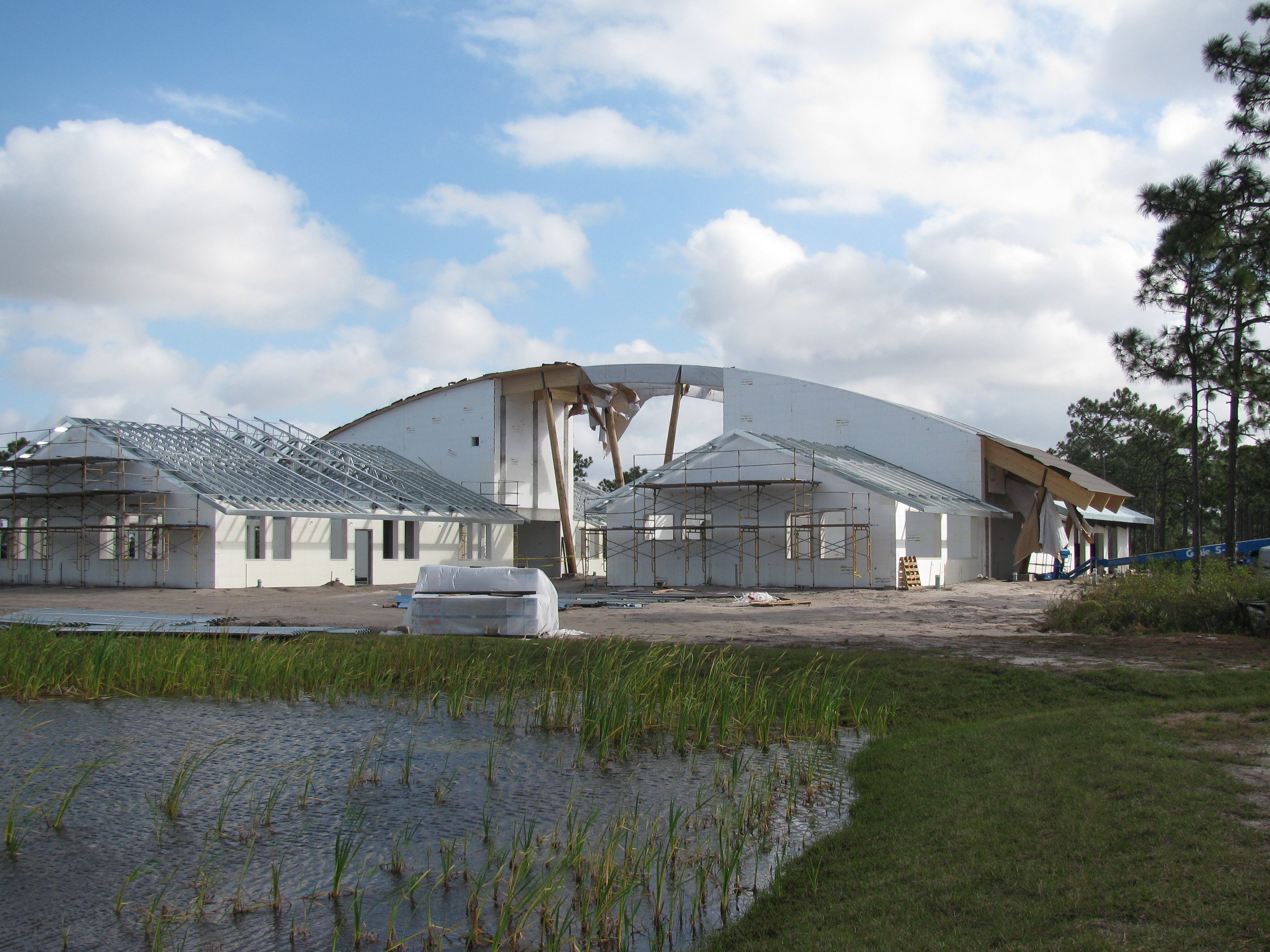
Net Zero Building Design is Going to be the Standard Sooner than Later
Change is coming:
If you do not yet sense an urgency for change, you will soon.
Sure, there's market resistance, and there will continue to be, and so far, it doesn't seem to have moved very fast. But that's because the market will only transform so fast without a crisis.
The sweet spot for now may be where both sides are angry: The market is uncomfortable with the required rate of change, and those that understand the current and pending risks are angry that change is not happening fast enough.
The question today: Why do something different? We are all pretty good at what we do, so why change?
When the risk of NOT changing exceeds the risks of change, change becomes inevitable... so long as everybody sees and believes it.
Change involves risk and creates tension, so we must keep that in mind.
Currently we face many threats and opportunities
- Climate Change: The Planet is stressed
- Carbon
- Population Increase: 7+ billion people now
- Geo-Political Risk
- Cost of energy
- Government taking Action (codes)
- Long term performance
- Eco Systems provide basic services
Rewards also exist for those who are proactive, not reactive.
- Increase profits
- Access to natural resources
- Access to Capital
- Efficient management of resources
Climate change is like the internet. It arrived one day, gets bigger every year, and shows no signs that it will ever go away. It's transformed industries, created new ones, and impacted EVERYBODY... Just like climate change.
The goals of 2030 Architecture
Net Zero Energy is a path that began with the establishment of a base line of energy use/efficiency standard set in 2003. The path goes from 2003 to 2030, and the point is to incrementally reduce the energy use of buildings, shifting to the use of fossil free energy, and having all new buildings be carbon neutral by 2030.
Energy Codes have improved efficiency requirements by about 40% since 1985, and within that window, the large bulk of the change (36%) happened since the first efficiency standards were set in 2003.
So, codes have taken us about 1/3 of the way to our 2030 goal, which is a good start, but we're already 48% of the way to the deadline.
How does one achieve NET ZERO? (Carbon Neutral Building)
Step 1:
Design a building that uses 60%-80% less energy than a minimal code compliant building.
Step 2:
Provide fossil free fuel energy for the remaining energy needs.
Simple, right? The playbook to get to net zero is widely accepted and a proven, successful approach. But reducing energy consumption by 70-80% and maintaining comfort is not accomplished by simply tweaking the way we have always designed and built buildings.
However, a fully integrated, thoughtful and intentional design IS.
Out of these two areas for improvement, we can directly impact the first, which is energy efficiency. Two, we continue to put pressure on legislative support for renewable energy sources, such as wind and solar. Even with minimal increases in the latter, we can go a long way when building design is driving the change.
(MORE LIKE THIS: Does the Cost of Solar Energy Outweigh the Benefits?)
The current 2030 goal is 70% reduction in 2016:
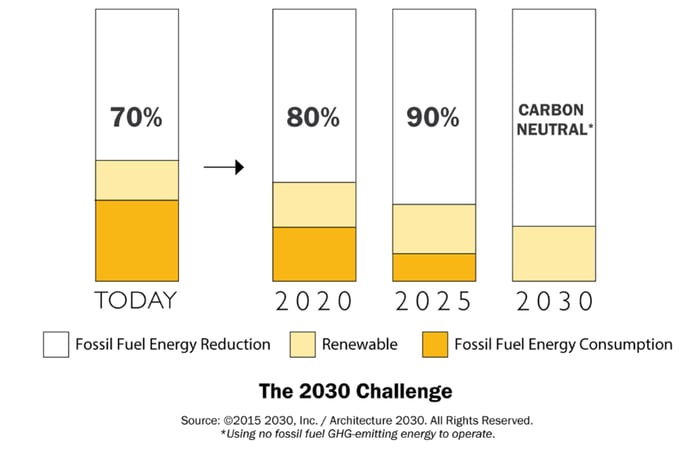
Since 2003, we have seen an increase in energy efficiency requirements, including one of the most recent in 2014. The graphic below shows the steady improvement of the Energy Codes over the past 30 years.
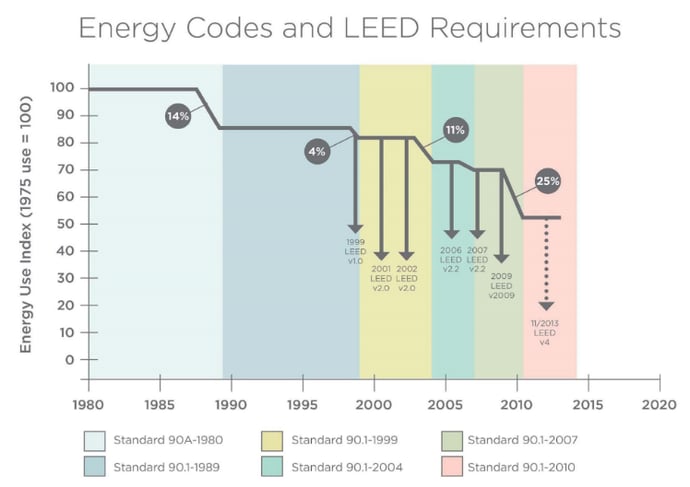
(Graphic above provided by US Green Building Council)
LEED will always try to stay ahead of the building codes. The next graphic shows this pretty clearly.
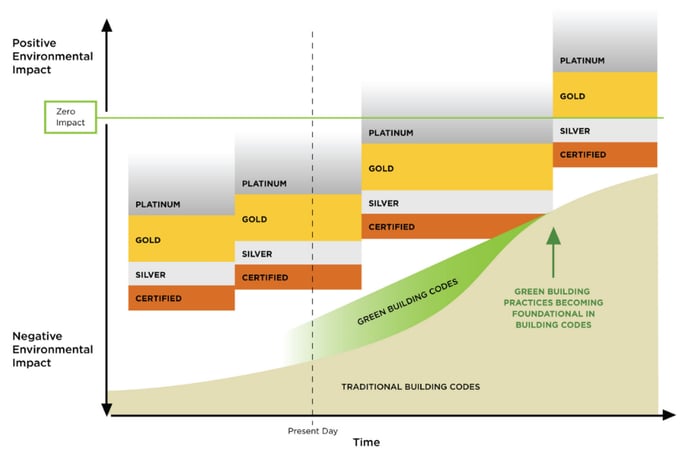
(Graphic provided by US Green Building Council)
As the codes improve, LEED changes it base line criteria to be more stringent to stay ahead of the curve. In my opinion, this kind of pressure is helpful in driving better legislation, which drastically improves our chances for success.
Green Building codes and green rating system standards are gradually incorporated into the code requirements for all buildings. Eventually (ideally by 2030), the code will require all to be net zero energy buildings, which will mean that new buildings will have zero carbon impact to the environment based on energy usage.
Currently, we are developing new buildings that have less negative impact than in prior years, which is fine for starting, but "less bad" isn't where we want to settle. Why not move toward developing buildings that have a positive impact on the environment?
Examples of Net Zero Buildings & Net Zero Ready Projects:
Audubon Visitors Center - Sarasota, FL (FULL GALLERY)
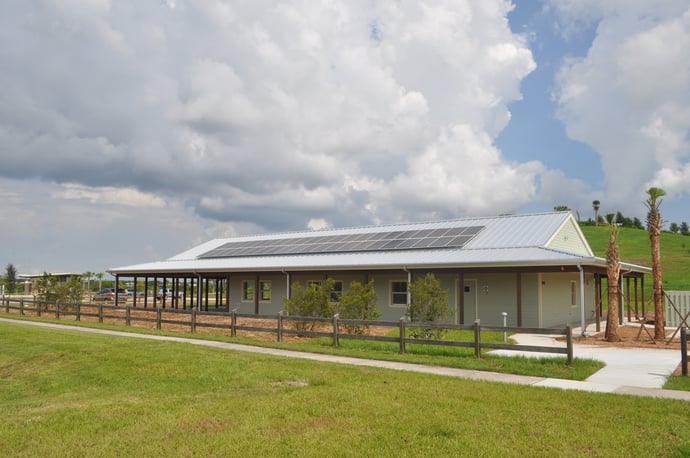
Cancer Support Community - Sarasota, FL (FULL GALLERY)
Sun N Fun Wellness Center - Sarasota, FL (FULL GALLERY)
HGTV Green Home 2009 - Port St. Lucie FL (FULL GALLERY)
Kashi by the River - Sebastian, FL
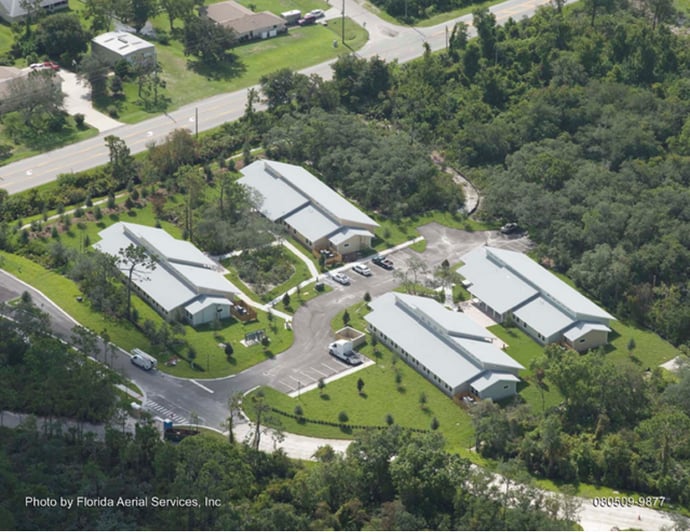
RESOURCES
2030 Challenge
NZEB
New Buildings Institute
US Green Building Council
Want to know more about designing for Net Zero?
Schedule a free consultation or download this great ebook on how to design a green home:
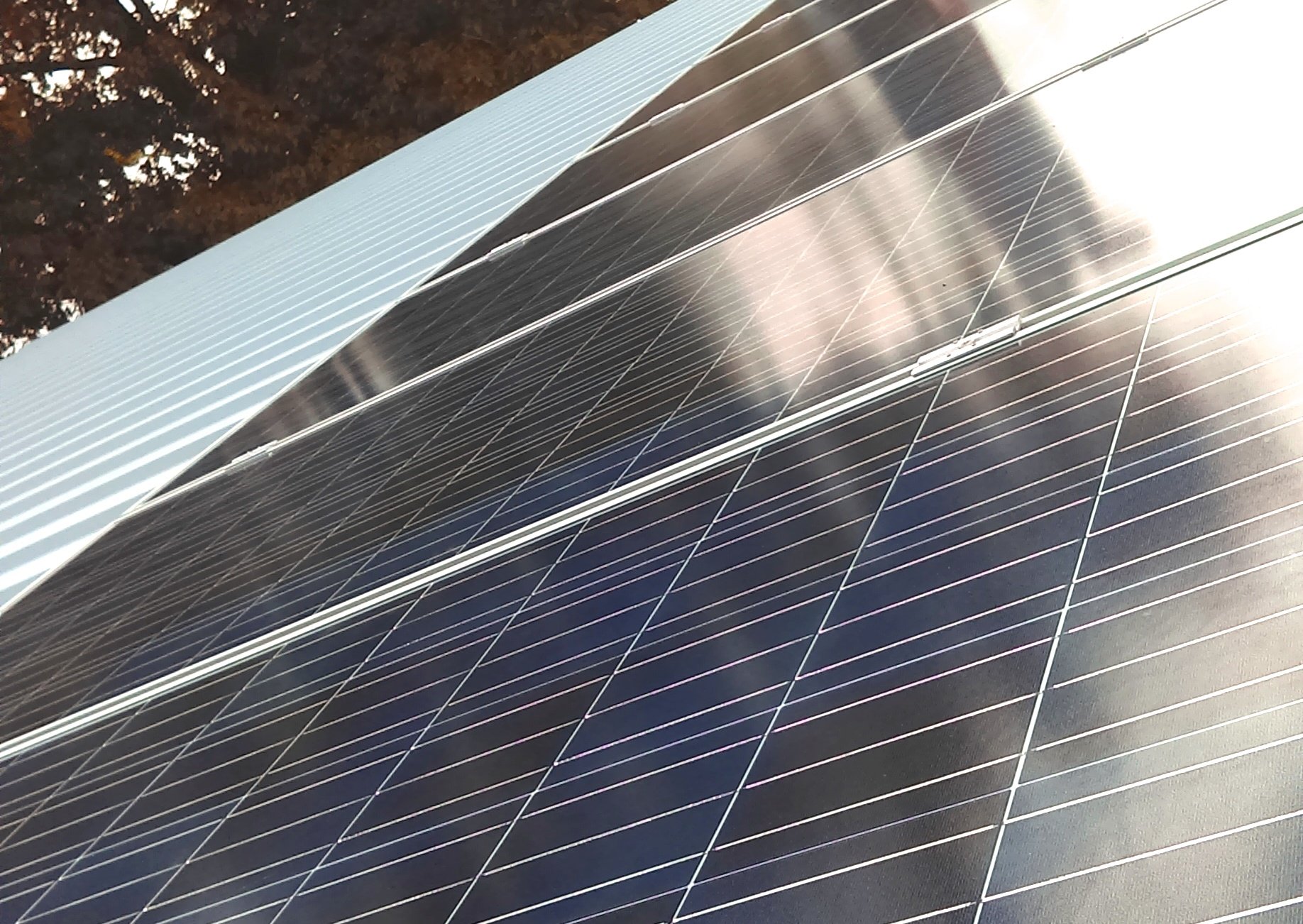
Does the Cost of Solar energy outweigh the benefits?
How much does it cost to turn the sun into electricity, and is it worth it for my Florida building?
According to the Solar Energy Industries Association, a typical residential system should lower your electric bills by 25% to 50%. The a verage household pays about $110 a month for electricity, according to the Energy Department, so a solar-panel system should save you between $300 and $600 a year.
Not bad....
Finding such savings and a shorter payback time than I expected when I first started looking into the subject, led me to doing further research on the use of solar panels for residential energy in sunny Florida.
However, doing so opened a can of political worms I was hoping to avoid, because it turns out that our laws are tilting the scales in ways people don't realize.
MORE LIKE THIS: How to Choose a Solar Power System for your Home or Business
Why squander potential like this?
Sunny Florida has plenty of solar energy potential so why haven't we adopted a more aggressive stance on generating our own clean, affordable power? We're at a great advantage because of where we are, as there are no excessively long payback periods for installation of solar panels in sunny southern states.
Something is holding us back.... But what?
It was interesting to find that Florida ranks third for solar potential according to the Solar Energy Industries Association (SEIA), Florida, but only placed between 14th and 18th (research varies) on the list of largest solar installers. (resource)
The payback period:
If you live in a state where the cost for electricity is in the higher rate tiers, the payback can be as little as 2-4 years. However, it should be noted that the time-frame will vary greatly depending on the size of your system, the cost of your system, and future swings in local electricity costs.
Florida happens to be a state where we are slightly above the average price per kilowatt hour when compared to other states, so it's a little quicker for us.
The Argument against solar
Utility companies have been saying residential solar systems cost them money because solar owners pay less in monthly electricity bills, yet expect their utility to step in and deliver power whenever their system doesn’t, which puts unexpected stress on their systems.
Solar advocates, on the other hand, say residential solar systems save utilities money by taking pressure off the electrical grid.
So, who do we listen to, and who are our elected officials supporting? And, is it any surprise that those making money off of our dependence on non-renewable energy sources are advocating against solar?
Not to me, but I kept digging anyway.
How to reduce up-front costs
Although payback for installing solar panels is becoming more affordable all the time, small systems still remain too expensive for most homeowners and businesses. Cheap electricity from fossil fuels and nuclear power gives property owners less reason to buy a system.
In some states, solar companies lease panels to consumers so they avoid the up-front costs of the panels.
And, actually, I found data that covered four-fifths of the United State's solar capacity in 2014, and it stated that almost two-thirds of residential solar systems were owned by a third-party solar company. (resource)
HOW POLICY IS TILTING THE SCALES:
Surprisingly, Florida hasn’t opened the door to these kinds of third-party ownership arrangements, which means we don't have the same kind of access to clean energy as the states that do.
We actually have legislation that directly opposes it. Under the Florida Constitution, only utilities can sell directly to consumers.
In addition to not having access directly because of the financial implications, it also means that landlords of commercial and residential buildings who have installed solar panels on the roofs of their properties cannot sell the electricity to their tenants.
It's clear to me that our current regulations are hampering deployment of solar in Florida, which is incredibly frustrating for somebody who has dedicated their career to implementing sustainable design.
Think about it... How many people do you know who are renting their homes? And do you realize how many commercial buildings there are that lease space to their tennants (hint: it's pretty much ALL of them)?
What else our state is not doing
Florida Power and Light (FPL) offers rebates to residential customers who implement certain energy efficiency improvements in eligible homes. There are HVAC rebates and incentives for upgrading ceiling or roof insulation, or installing a reflective roof.
Strangely, though, there are no state rebates for solar panels in Florida.
There are, however, Federal Income Tax Credits for Energy Efficiency that includes solar generated energy. Tax credits for Solar Energy Systems are available at 30% through December 31, 2019.
If you have a pool, however...
That takes us to Plan B: Solar panels for swimming pools. There are approximately 800,000 swimming pools (including above-ground) in Florida, and most of them must be heated during the cooler months to maintain comfortable swimming conditions.
An unheated pool will stay generally at about the average outdoor temperature, which may be in the 50’s during the winter months here in Sarasota. For most people comfortable pool water temperatures are 78°F to 82°F in spring and fall and 76°F to 78°F in winter.
Average yearly cost for heating a residential pool in Florida is $1,450 using electrical resistance, $500 using an electric heat pump, and $580 using natural gas. Liquid propane would cost the same as electrical resistance. (resource)
A typical solar heating system costs from $2,000 to $4,000 installed. Costs vary based upon the ease of installation, type of financing, location of pool in north or south, length of pool season desired and building code requirements.
The good news, compared with average fossil fuel heating, a solar pool heater offers a favorable payback of 1.5 to 7 years. In addition, the solar pool heating industry in Florida is mature. It has numerous distributors and contractors and a track-record of over 20 years of experience, and with proper care a system can last you 10 to 15 years.
Schedule a free sustainable design consultation
CONCLUSION:
Change never comes easy, even when it means saving our species from extinction. But we must take steps that lead us to total sustainability, or we won't be able to reverse the calamities caused by our dependence on limited and polluting energy sources.
I say that we should make some noise and make these issues known to our elected officials, so they know we're serious about enacting change that will benefit ALL of us.
Meanwhile, please enjoy a relaxing dip in your solar powered pool!
Interested in learning more about green home design? Check out this handy ebook my firm published about why it's an absolute MUST:
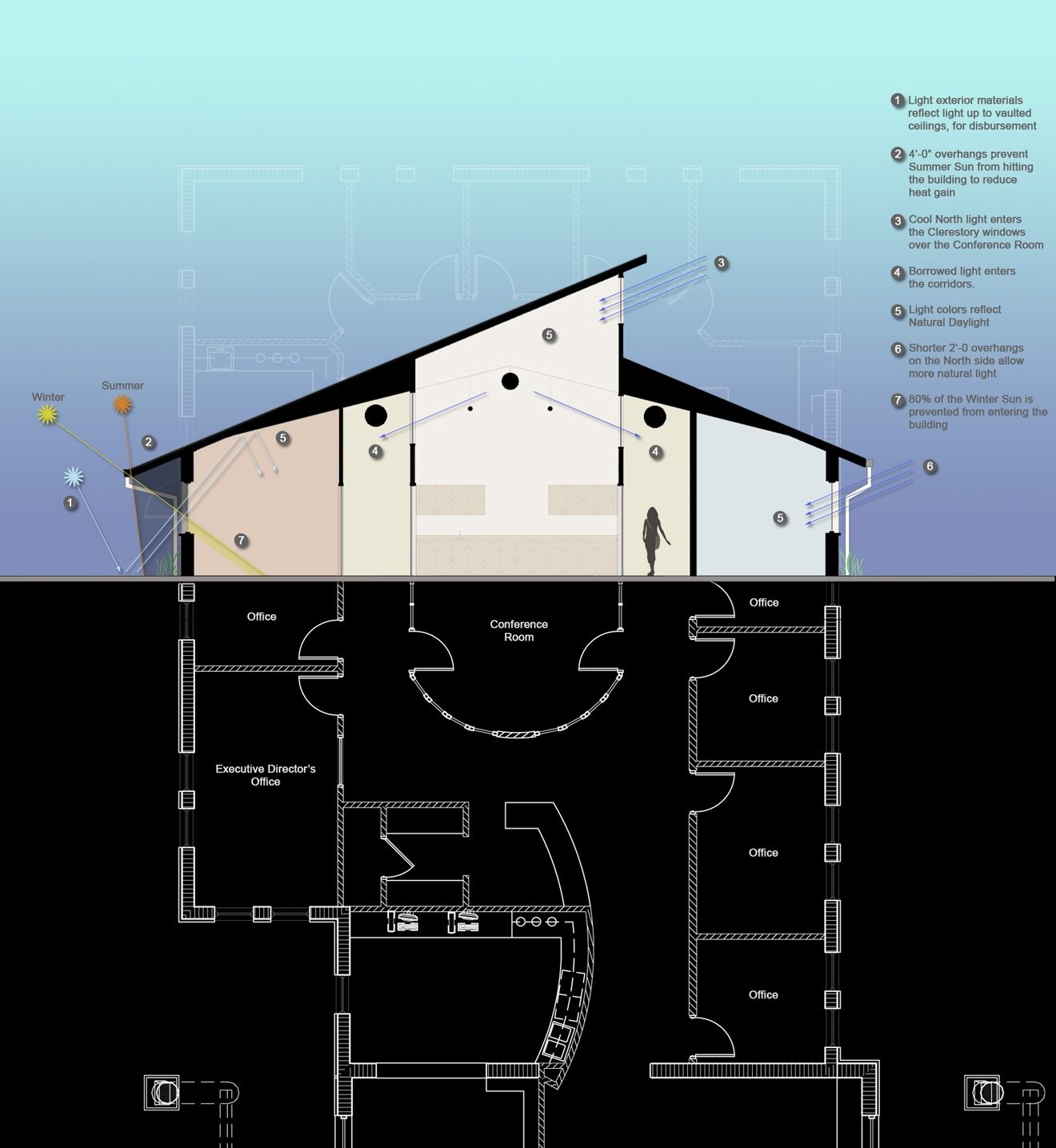
How we're going to meet the 2030 challenge
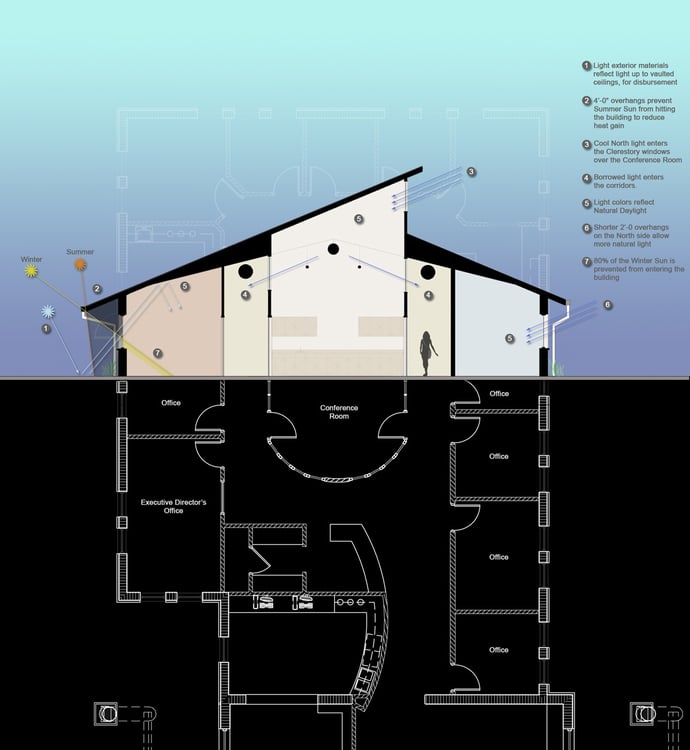
I was in attendance at the International Living Futures Institute’s (ILFI) Living Futures 2016 conference in Seattle the week of May 9, 2016. It was an amazing gathering of leaders in sustainability.
One of the keynote addresses was given by Ed Mazria, Founder and CEO of 2030 Architecture and of the 2030 Challenge. The imperative that he spoke about is that we reach zero net carbon emissions for all new buildings by 2030 and for ALL buildings by 2050. He spoke about how not only is it important, but it's an absolutely necessity for the survival of our species.
Many see it as a bold plan, because it simply won't accept business as usual in the built environment, but not us, because we know for a fact that these goals are attainable, and they're just the things that motivate us every single day.
This got me thinking: What do we need to be doing, as architects in Florida, to stay on track to meet the 2030 Challenge?
It's a road already built:
2030 Architecture has a detailed plan to get us to net zero carbon emissions in the built environment. Their web site states, “The Roadmap to Zero Emissions is a flexible plan that sets out the emissions reduction targets necessary in the building sector worldwide to avert dangerous and irreversible climate change, including the actions and financing instruments needed to reach the targets.”
The target of Architecture 2030 and of the COP21 held in Paris last December and just recently ratified, is to hold global temperature rise under 1.5% Celsius (2.7 degrees Fahrenheit), and to avoid exceeding 2 degrees Celsius (3.6 degrees F) of temperature rise at all cost. Any scenario of 2 degrees Celsius is uncontrollable, leading us to the point where it cannot be stopped.
Find the roadmap here
http://architecture2030.org/initiatives/roadmap-to-zero/
Calculating Our Goals:
The current 2030 goal in 2016 is 70% reduction of carbon emissions below the base line set for buildings in 2003.
I have done some research, with some help from some experts, (thanks TLC Engineering for Architecture http://www.tlc-engineers.com) and this is how I think we need to meet the 2030 challenge TODAY, based on the requirements of the current Florida building code (FEC).
- The 2014 Florida Building Code (FEC) is based on the 2012 International Energy Conservation Code (IECC), which in turn is based on ASHRAE STD 90.1-2010 (the new LEED v4 benchmark).
- The Architecture 2030 folks, working with the AIA 2030 Commitment, have determined that a building that meets the 2012 IECC can be expected to operate at 40% less energy than the 2030 Challenge baseline (coming from the 2003 CBEC survey of existing commercial buildings) building. So, if a baseline building has an Energy Use Intensity (EUI) of 100 kbtu/sf/yr, then the 2014 FEC/2012 IECC code minimum building would be about 60 kbtu/sf/yr.
The current 2030 goal of a 70% reduction of the 100 kbtu/sf/yr baseline example means that a building that meets that goal would use no more than 30 kbtu/sf/yr (including energy cost reductions and any on- or near-site renewable production).
Plans:
So the short answer to my question is that in order to meet the current 2030 goal, a building would have to use 50% less energy than a minimally compliant 2014 FEC/2012 IECC building.
There you have it. We know what we need to do. Now we need to go out and do it.
Why Carbon:
Sustainable building design requires a well balanced approach that takes many factors into consideration, not just energy use and carbon emissions, but I wanted to focus this blog on Carbon emissions to highlight its importance.
You may remember Carlson Studio had its big year end party in celebration of COP21, and we did it on the day of the conference designated as “Buildings Day” December 3, 2015, because anything that has to do with saving our planet from irreversible distruction is something we celebrate. After all, this stuff is engrained in us.
Click here to receive a free green building consultation of your own:
To learn more about the International Living Future Institute, start here:
To learn more about Buildings Day at COP21 start here:
http://web.unep.org/climatechange/buildingsday


